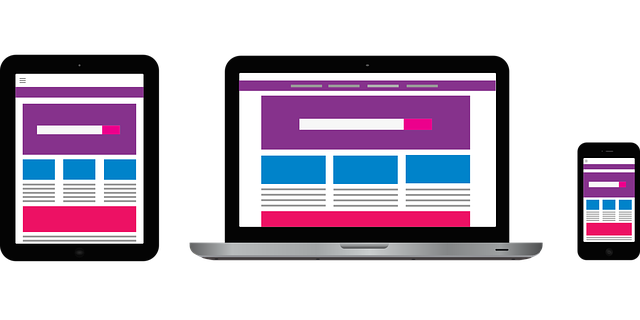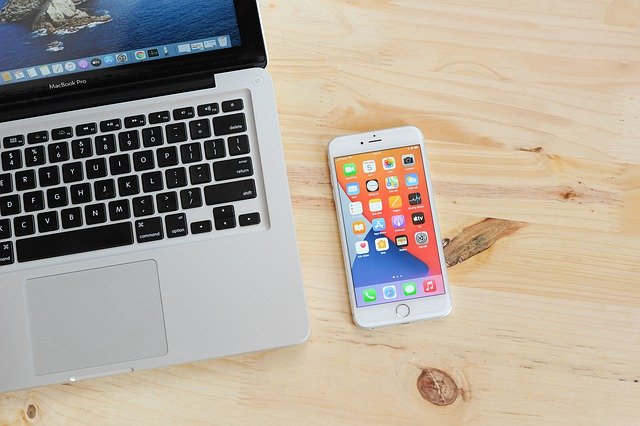This post will show you the purposes, risks, and advantages of device synchronization.
Device synchronization is a common thing these days. Upon purchasing any device, most of the time, users automatically turn on a sync feature. Although they might not be able to access their files from other devices, they want this option to synchronize data and keep it safe and secure.
Unlike those who turn on the feature but don’t employ it, students are everyday users of device synchronization. Not only do they utilize their smartphones, but they also deploy tablets, laptops, and PCs daily. They must reach any file in the blink of an eye, be it a college project, a professionally written essay from WritingCheap, or any other file unrelated to academia.
But with all that said, what is device synchronization, exactly? Why do even those who don’t use several gadgets interchangeably have this feature? After all, are there any risks of device synchronization, or is it truly a pure blessing, as many people claim? Let’s look at device synchronization in a broader scope and find out more about it.
READ ALSO: How Do I Install WordPress On Media Temple?
Table of Contents
What Is Device Synchronization?
In plain terms, device synchronization, also known as sync, connects one gadget with other devices using a specific app and the Internet connection. Such an application allows users to transfer and receive data quickly and easily.
Prevalent apps for syncing are Google Drive, One Drive, DropBox, and iCloud. They all have their peculiarities and are available on different operating systems.
The Primary Purpose Of Device Synchronization
Device synchronization aims to:
- Keep files at hand: Although sync has been available for many years, only recently have people started using it actively. Before that, it had been typical to send files to the mail and then download them, use Bluetooth to share files, etc. Now, people turn on full sync or choose the file and sync it manually.
- Access from any point: One of the main points of device synchronization is that people can reach their files wherever they are. They don’t need to have a stable Internet connection to access a file, presentation, or other documents. Syncing lets them browse files offline from any device and point.
- Quick share with other users: Quickly sharing important files matters the most when you are a student or an employee. Especially when it comes to collaborative works that require immediate editing, by syncing and allowing particular people to access the file, you not only make the entire work process more effective, but you also save plenty of time.
- Saving storage: Syncing enables you to have crucial files on the cloud without having them on your device. This way, you save plenty of storage on your phone when reaching data from your local computer or laptop.
- Making work sorted and organized: Another purpose of device syncing is to organize the files and make them easily accessible for anyone related to the folder. Thanks to it, you and your colleagues no longer need to sort files from scratch every time you download them from email.
READ ALSO: Full Review of RoboForm – Secure Password Manager
Where Is Synchronization Used?
Device synchronization doesn’t confine itself to a limited number of target users. Practically everyone can use device syncing and benefit from it, including but not limited to:
- Business users interacting with other departments: Thanks to device syncing, exchanging files has never been that easy. People don’t have to upload documents on a flash drive; they can go to the other end of the office to show the file and discuss it. Such tasks are manageable online.
- Executives making crucial decisions: Large corporations have offices scattered across the world. The best way for executives to make critical decisions regarding a specific project is through syncing.
- Manufacturers accessing the most recent updates: Manufacturers also benefit from syncing. They no longer need to wait until the executives send updates concerning the product.
- Students accessing the necessary files to work on assignments: Collaborative work is common in college. Students often have group projects, and the number of such tasks has skyrocketed. Device syncing lets participants reach the project, edit it, and make suggestions for any changes.
- Photographers and videographers keeping their works on the cloud: These creative files usually take too much space to upload to a flash drive or send via email. In contrast, device syncing allows them to reach their files and demonstrate them to others from various devices briskly.
Advantages Of Device Synchronization
While many are aware of what device syncing is, the question of “Is it that beneficial?” might still arise. Device synchronization has various potent advantages:
- Improve the online format of studies and work: With the coronavirus outbreak, people had no choice but to switch to an online format of work and studies. Remote working or studying isn’t easy, but they aren’t new either. In the past, distance learning wasn’t as effective as it is now. Device syncing is one of the reasons that online education is more effective.
- Allow users to feel unchained: Productivity can’t be high if people can access their files only at work. They start feeling chained to the office. Permitting them to work from home and use a syncing device feature will increase workers’ morale.
- Increase productivity when being on the go: There are times when you have to edit something quickly, but you don’t have a laptop with you. What to do? Thanks to device syncing, you can perfect your files when commuting to work.
- Save files immediately: Imagine yourself writing an extensive work, a thesis, for instance. Having written over 30 pages, you can’t stop thinking about pressing Ctrl+S every now and then. Luckily, you don’t have to do that when working on Google Docs. Not only does the app save any changes that happen every second, but it also lets you access the document from various devices.
READ ALSO: What Is Automated IP Address Management?
The Pitfalls Of Device Synchronization
Without any doubt, device syncing has its caveats. The main risk of using device synchronization is potential privacy threats, which may raise concerns if you:
- Extend access past personal use: By mistake, users can open access to their files and share links on dubious web pages. This can lead to sensitive information leaks and extortions.
- Lost your device that can be unblocked: Losing a device is always unpleasant, especially if it synced with other gadgets. To lower the risk of threat, users should change passwords to all cloud storage.
Nothing is perfect, and any cloud storage can experience accidental issues. For example, it may take a considerable turnaround time if anything happens. Suppose you use a free version, and something occurs in your files. In that case, you are likely to wait a decent amount of time until any technical support representative reaches out back to you.
Device Synchronization: Frequently Asked Questions
In today’s multi-device world, keeping your data and information consistent across all your gadgets can be a challenge. Device synchronization offers a solution, ensuring your files, contacts, emails, and other data are up-to-date on all your devices. Here are some FAQs to answer your questions about device synchronization:
What is meant by the synchronization of devices?
Device synchronization refers to the process of automatically copying or updating data on one device to match another device. This ensures you have the latest version of your information readily available, regardless of which device you’re using.
READ ALSO: Reasons To Use Data Tape Media For Your Business
How do you synchronize devices?
There are several methods for syncing devices:
- Cloud Storage Services: Popular services like Google Drive, Dropbox, or iCloud allow you to store your data on their servers. Any changes you make on one device are automatically uploaded and reflected on your other devices that are connected to the same service.
- Direct Device-to-Device Sync: Some applications or software programs offer built-in synchronization features that allow direct data transfer between devices over Wi-Fi or Bluetooth.
- USB Cable: For a more manual approach, you can connect your devices using a USB cable and transfer files directly.
What is synchronization in mobile phones?
Mobile phone synchronization is particularly useful for keeping your contacts, calendars, emails, and notes consistent across your smartphone, tablet, or computer. Many phone manufacturers and email providers offer their own syncing solutions.
What is the purpose of synchronization?
Device synchronization offers several advantages:
- Data Consistency: Ensures you have the latest version of your files, contacts, and information on all your devices.
- Convenience: Access your data from any synced device, eliminating the need to transfer files manually.
- Improved Productivity: Streamlines workflows and allows you to pick up where you left off on any device.
- Backup and Recovery: Synchronized data stored in the cloud acts as a backup in case of device loss or damage.
What happens when you sync devices?
The specific process depends on the synchronization method you’re using. Generally, when you make changes on one device, the changes are uploaded to a central location (like the cloud) or the other device. The other device then downloads and applies the changes to its local data, ensuring everything stays in sync.
What are the three methods of synchronization?
As mentioned earlier, the most common methods include:
- Cloud Storage Services: These offer a convenient and automatic way to keep data synchronized across devices.
- Direct Device-to-Device Sync: Some apps or software allow direct data transfer between devices for specific file types.
- USB Cable: A more manual option for transferring files directly between devices using a physical cable connection.
A Final Word…
By understanding the different synchronization methods available, you can create a system that keeps your data consistent and accessible across all your devices, enhancing your productivity and overall digital experience.
Do you sync your devices? Can you relate to the mentioned merits and demerits? We are anxious to read your comments!
INTERESTING POSTS
- VPN Chaining: Can You Use Multiple VPNs at Once?
- Free VPN vs Premium VPN – Which one should I go for?
- Why Is Cybersecurity In Financial Services Important?
- 8 Popular Types Of Cybercrimes In The 21st Century
- What Is Zero Day Exploit? Risks And Why Is It Called Zero Day?
- How To Get Surfshark VPN Free Trial
- How To Overcome Remote Work Security Threats
- The Advantages Of Mobile Proxies
About the Author:
Daniel Segun is the Founder and CEO of SecureBlitz Cybersecurity Media, with a background in Computer Science and Digital Marketing. When not writing, he's probably busy designing graphics or developing websites.









